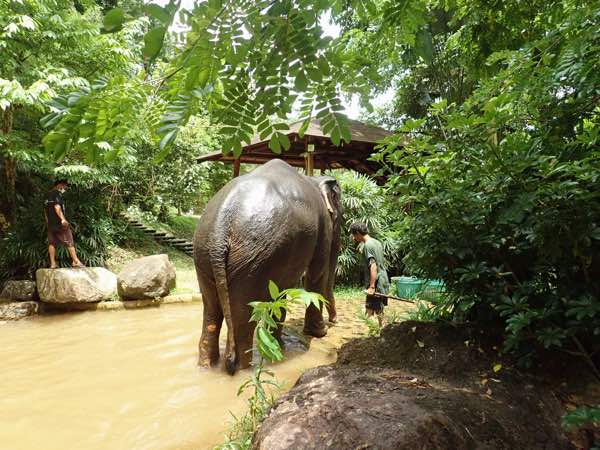Elephants in Thailand
Elephants have been a part of Thailands culture and heritage for many centuries. Used for logging, moving heavy objects, and more recently for ‘entertaining’ tourists, they have been seen as ‘working animals’ for most of this time.
While some may have had a reasonable life, that is not true for all of them. With some animals enduring cruel and barbaric methods of ‘training’, there are many that are quite damaged, physically and mentally.
Elephant Rehabilitation
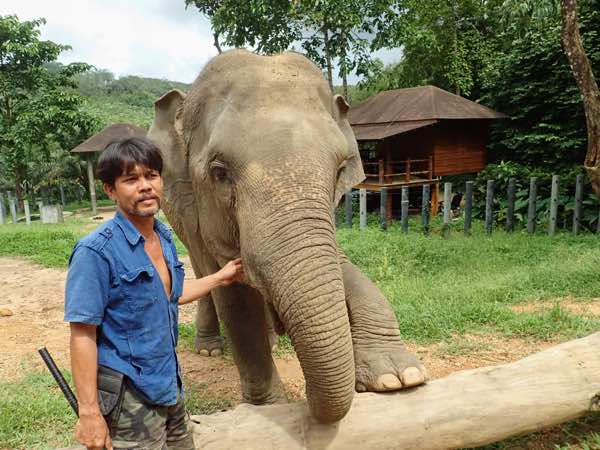
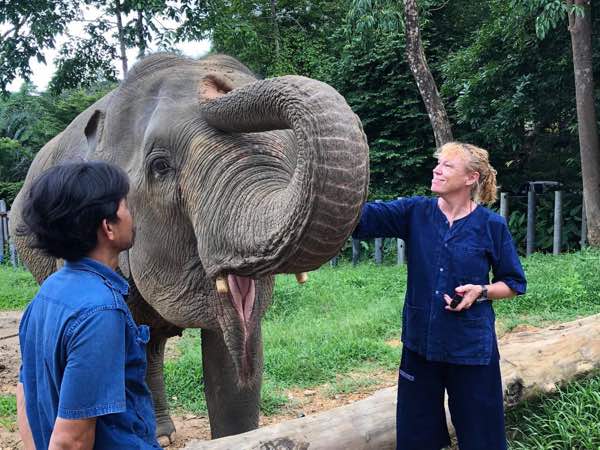
Many ‘sanctuaries’ have sprung up in recent years, some are better than others. We visited Phang Nga Elephant Park, which is about 40 minutes from Khao Lak, and is approximately 50 acres of jungle park.
Pi Lek, the owner, clearly has an amazing understanding of the elephants and it’s obvious that they trust him. They have 10 elephants in their care, ranging in age from 50 years down to a mother and her adopted baby. The elephants spend most of their time grazing in the jungle, but are brought down at least once each day for a health check and a bath.
Elephants have a similar life span to humans (about 60 years in the wild), with 6 sets of teeth that each last around 10 years.
The Elephant Tour
For our tour, they brought down 3 elephants who were all comfortable interacting with strangers. Not all of the elephants are comfortable in that scenario, and those that are not spend their days in the jungle away from the tourists..
We were given an overview of the park’s routine, and the plan for our half-day tour. They normally limit visitors to 18 at a time, but as covid has severely limited tourism here in Thailand, our group of 5 was the only one.
We met the elephants, giving them time to get used to us, then accompanied them on a short trek up to a feeding area. Hand-feeding bananas is a fairly low impact but fun way to get to know the elephants and they love bananas! They were happily grazing on the short trek up and back.
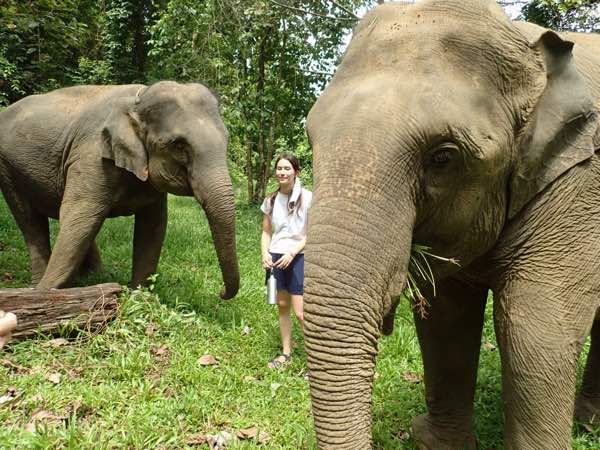
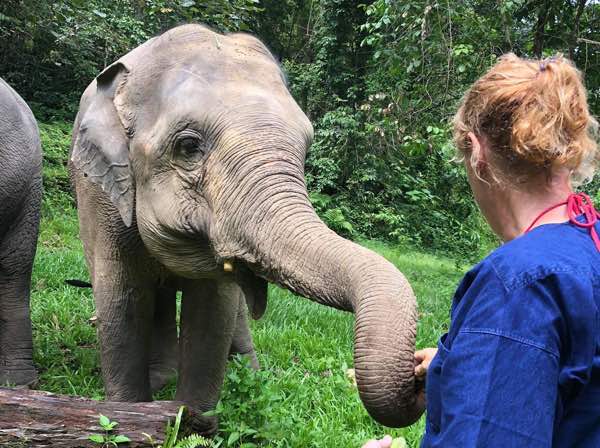
Bath Time
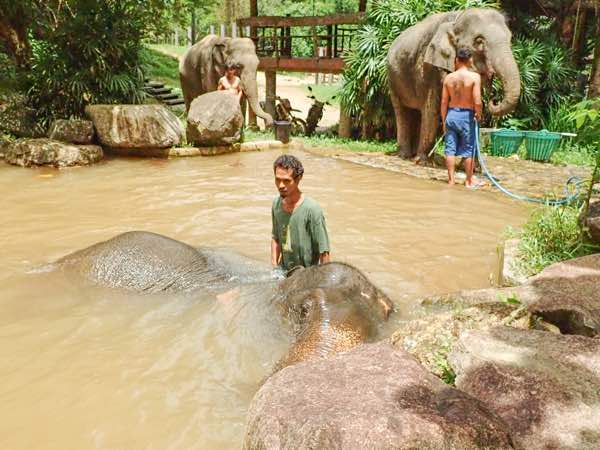
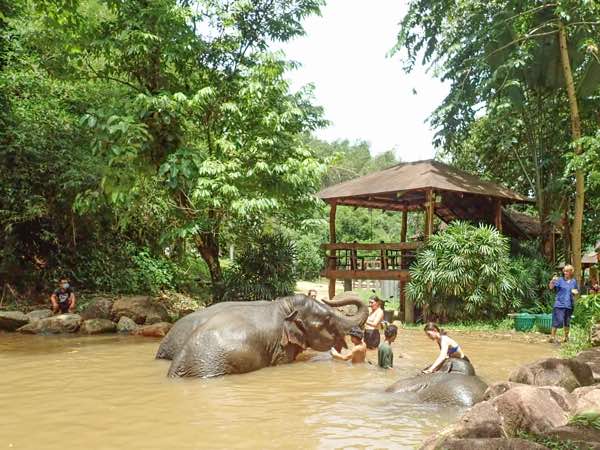
The highlight of the tour for the elephants was definitely the bath time. They waiting patiently while they were showered, and then rushed into the water for a soak.
After a few minutes of chill out time, their mahouts starting giving them a scrub, and 3 of our group chose to help.
Our tour ended with lunch cooked by Pi Lek’s family, which was beautifully presented and tasty.
The whole tour was informative, calm, stress-free, and primarily focused on the well-being of the elephants. They were healthy and relaxed, trusted their mahouts, and didn’t appear to be under any stress.
Why visit an elephant park?
While there is nothing ‘natural’ about any elephant tour, I really felt that the elephants were comfortable and happy.
The sanctuaries and parks that have been set up to care for elephants need to maintain an income – vets bills, mahout wages and supplemental food to maintain a balanced diet all cost money, and elephant tours are a low-impact way of earning that income.
Not all sanctuaries and parks are as well run as this one, so do your research before handing over your money, but once you’ve found one that you feel you would like to support, please do go and have an amazing day, learning more about the asian elephants.
